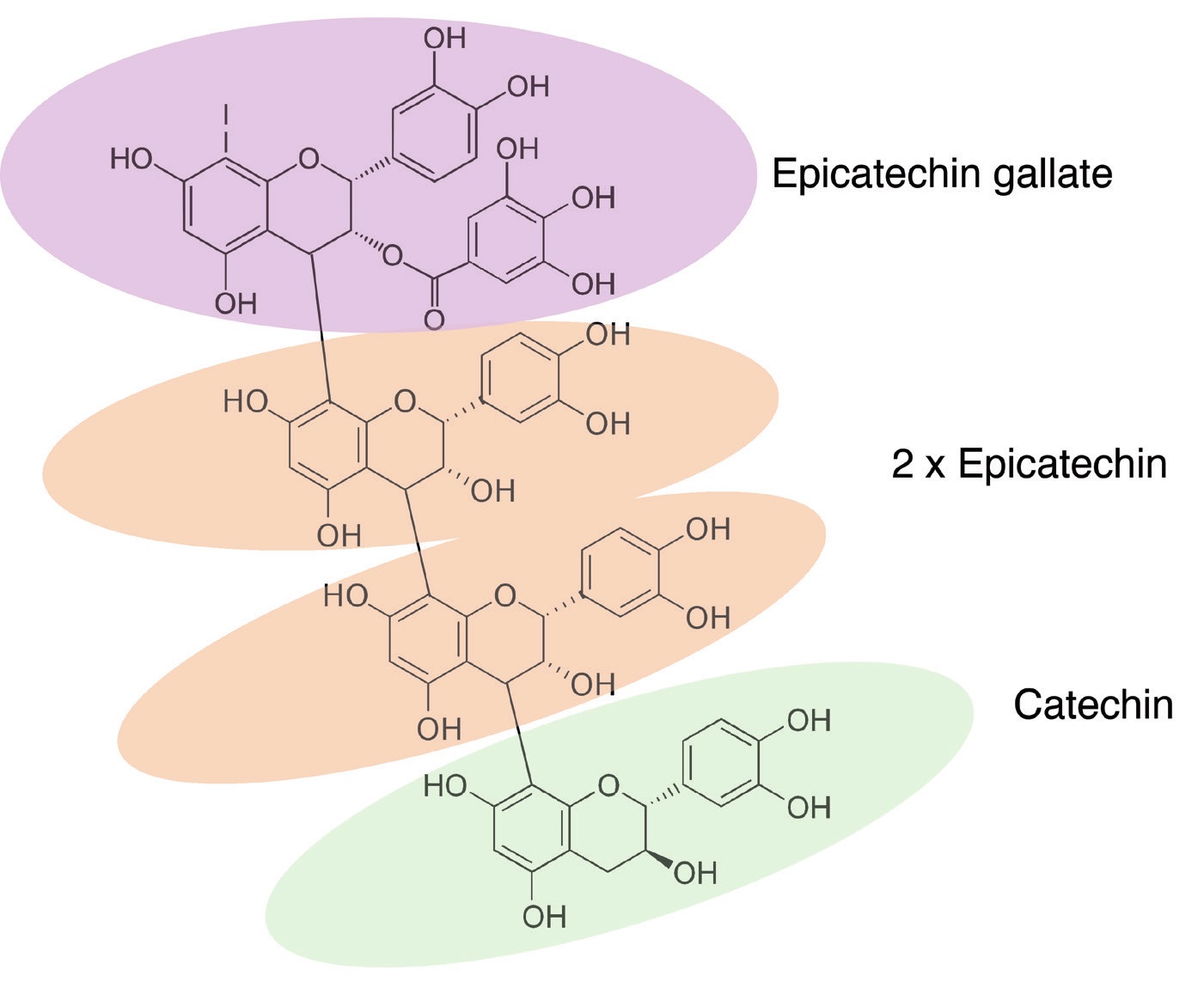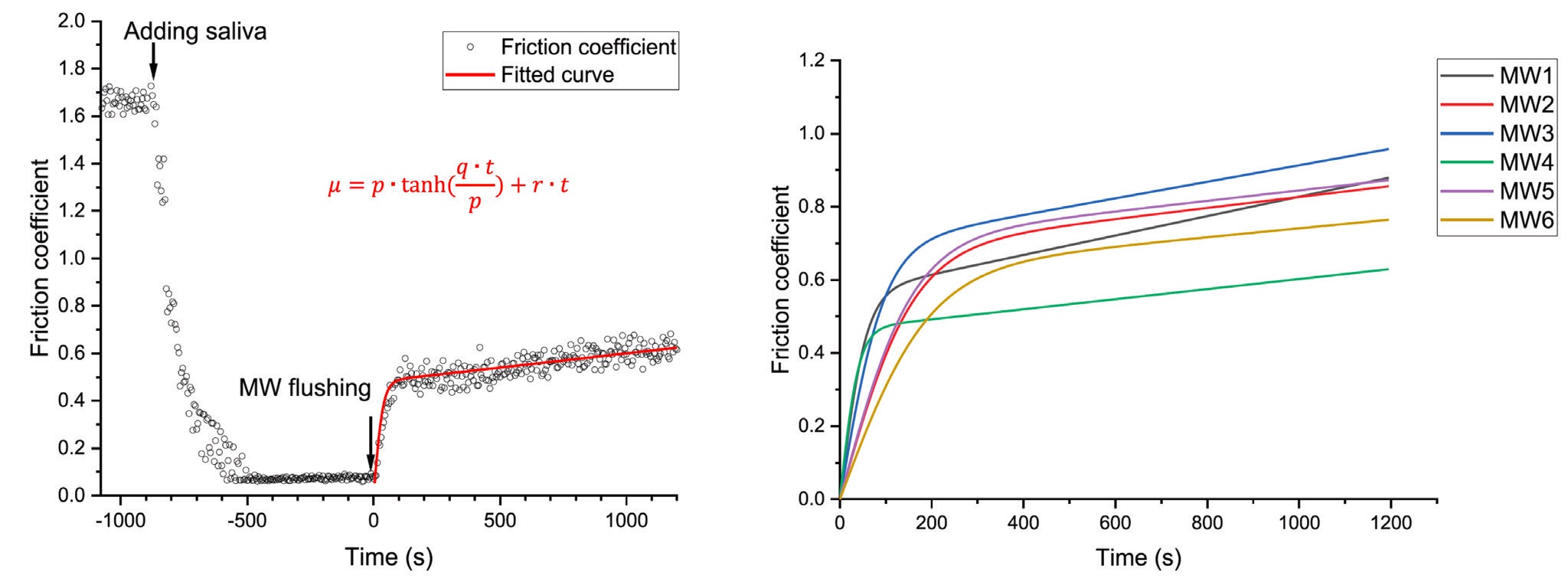The tribology of red wine
Drs. Wilfred T. Tysoe & Nicholas D. Spencer | TLT Cutting Edge December 2020
Tribologists are well placed to shed some light on the mouthfeel of red wine—an important sensory characteristic.
Wine, and especially red wine, is an extraordinarily complex water/ethanol solution of thousands of mostly organic compounds, which contribute to the aroma, the taste and the mouthfeel of the wine—all of which determine the sensorial experience during its consumption, not to mention the price of the bottle! Astringency is the most important aspect of the mouthfeel and has been variously described as a “dryness” felt on the palate, or a “puckering” of the oral musculature.
When making a good wine, the degree of astringency needs to be carefully managed; in excess, it dominates the drinking experience, detracting from other qualities, but very low levels of astringency can make the wine taste flat and boring. Its origin lies with a set of compounds known generally as “tannins” that originate from the skins and seeds of grapes and are extracted during the winemaking process. Tannins are made up of subunits known as flavan-3-ols, such as catechin and epicatechin, which polymerize to form tannin chains of various lengths and composition (
see Figure 1).
1
 Figure 1. Flavan-3-ol subunits join together to form grape tannins, which are extracted from the seeds and skins during winemaking.
Figure 1. Flavan-3-ol subunits join together to form grape tannins, which are extracted from the seeds and skins during winemaking.
When the wine is being consumed, these chains of flavanols can interact strongly with the saliva in the mouth, by virtue of their numerous hydroxyl groups, which promote hydrogen bonding to the saliva glycoproteins (proteins decorated with short, highly hydrated sugar chains), as well as hydrophobic interactions between the benzene rings on the tannins and the proline-rich protein backbones. Since one role of these glycoproteins is to lubricate the mouth, binding them to the tannins leads to an increase in friction between the tongue and the palate. This, in turn, activates mechanoreceptors in the tongue, leading to the characteristic dry mouthfeel.
2 During maturation of the wine in the bottle, slow reactions of these tannins with other wine components or oxygen render them less effective at binding to saliva proteins, leading to a desirable “softening” of the astringency with aging.
Those who have explored the mouthfeel of wine in detail have described many different subcategories of astringency, using dozens of complex terms such as “grippy,” “parching,” “abrasive” and “tingle,”
3 which suggests that there might be more than one astringency mechanism at work in the mouth. Heather Smyth, Jason Stokes, Shaoyang Wang and Sandra Olarte Mantilla from the University of Queensland, Australia, together with Paul Smith from Wine Australia, have examined this potential range of mechanisms with a set of clever tribological experiments, and have focused on two extreme subcategories of astringency, namely
drying and
pucker.
4
The authors prepared a number of model wines (MWs), in which the acidity and the amount of tannin were varied in a controlled manner. These samples were presented for tasting to a sensory panel, who evaluated them for different sensory qualities, including drying and pucker. In parallel to this, using a sliding-rolling tribometer with silicone-rubber contact surfaces as a model mouth, lubricated by saliva collected from volunteers, the researchers subjected the MWs to friction testing.
In a first set of experiments, it was found that the MWs on their own showed very similar lubricating properties, with μ ≈ 0.85. Compared to saliva alone, with μ ≈ 0.06, mixtures of the MWs with saliva led to a substantially higher friction in a range of approximately 0.5<μ<0.85, with the higher-tannin-level samples clearly showing higher friction. This led to the first conclusion, that the tannins were indeed inhibiting the surface-adhesion of the lubricating glycoproteins in the saliva and, therefore, degrading its lubrication performance. However, when comparing the results with those of the sensory panel, higher friction correlated with
drying but not with
pucker!
In a second round of experiments, the sliding surfaces were initially coated with saliva, so as to mimic the starting situation in the mouth, and then the effect of adding the MWs was monitored (
see Figure 2). A substantial increase in friction was observed, suggesting that the salivary layer was being removed, but at a rate that depended on the MW, where the highest-acidity samples removed the saliva layer the most rapidly. The rate of increase in friction also was found to correlate with the sensory panel’s results for
pucker!
 Figure 2. (a.) Adding model-wine samples at time 0s to a pre-formed layer of saliva on the silicone-rubber contacting surfaces of the tribometer. The subsequent data was fitted to the equation shown. (b.) The colored curves for the different model wines were plotted using the average values of the parameters from the fitting equation. Figure courtesy of Ref. 4.
Figure 2. (a.) Adding model-wine samples at time 0s to a pre-formed layer of saliva on the silicone-rubber contacting surfaces of the tribometer. The subsequent data was fitted to the equation shown. (b.) The colored curves for the different model wines were plotted using the average values of the parameters from the fitting equation. Figure courtesy of Ref. 4.
While the results of this tribological study confirm what was already understood to be the general role of tannins in wine astringency, they also support a deeper understanding of the mechanism by which the effect comes about. Furthermore, the authors have demonstrated that acidity plays an important role in the dynamics and subtleties of this important sensory characteristic. Clearly, there is a lot of scope for further tribological experiments, in order to gain a better understanding of this fascinating topic, and to have more precise control over wine quality.
FOR FURTHER READING
1.
Waterhouse, A.L., Sacks, G.L. and Jeffery, D.W. (2016),
Understanding Wine Chemistry, Wiley, UK.
2.
Laguna, L. and Sarkar, A. (2017), “Oral Tribology: Update on the Relevance to Study Astringency in Wine,”
Tribology – Materials, Surfaces & Interfaces, 11 (2), pp. 116-123.
3.
Gawel, R., Oberholster, A. and Francis, I.L. (2000), “A ‘Mouth-feel Wheel’: Terminology for Communicating the Mouth-Feel Characteristics of Red Wine,”
Australian Journal of Grape and Wine Research, 6 (3), pp. 203-207.
4.
Wang, S., Olarte Mantilla, S.M., Smith, P.A., Stokes, J.R. and Smyth, H.E. (2020), “Astringency Sub-Qualities Drying and Pucker are Driven by Tannin and pH—Insights from Sensory and Tribology of a Model Wine System,”
Food Hydrocolloids, 109, 106109.
Eddy Tysoe is a distinguished professor of physical chemistry at the University of Wisconsin-Milwaukee. You can reach him at wtt@uwm.edu.
Nic Spencer is professor of surface science and technology at the ETH Zurich, Switzerland, and editor-in-chief of STLE-affiliated Tribology Letters journal. You can reach him at nspencer@ethz.ch.